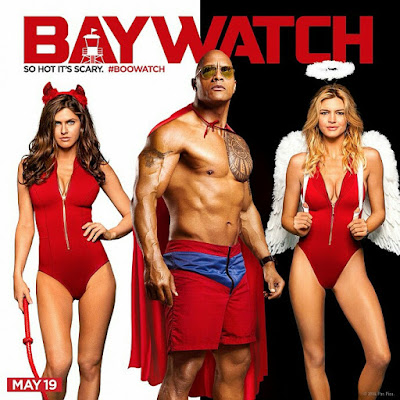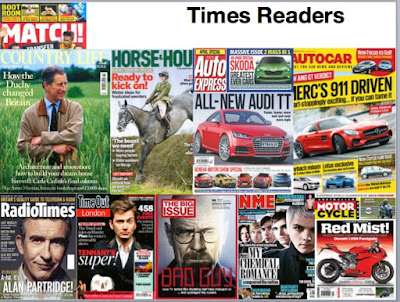Theories involving narrative challenge the world of literature and storytelling that we know today. Five famous narrative theorists: Vladimir Propp, Tzvetan Todorov, Levi Strauss and Roland Barthes. Are all extremely influential challengers of narrative structures, each of them have developed theories that are still referred to or used in today's cinema.
Let's begin with Vladimir Popp:
One example could be Star Wars, but it's very easy to apply to almost anything:
This theory can even be related back to the story of King Arthur and other stories of ancient legend, Arthur is helped by the magical helper (Merlin) and given his magical sword to go on his quest.
TZVETAN TODOROV
Tzvetan Todorov's theory is the idea that each
movie has a balance, it should always return to the balance “Equilibrium”
He believes that the story begins in the equilibrium state, where everything is fine and dandy; then everything will deteriorate from there. He states that all stories follow the exact same path as this.
These are the stages:
He believes that the story begins in the equilibrium state, where everything is fine and dandy; then everything will deteriorate from there. He states that all stories follow the exact same path as this.
These are the stages:
Stages: -Equilibrium- Disruption- Realization- Restored Order- New Equilibrium
An example of this theory in action could be the movie: The Incredibles.
Equilibrium: The movie begins with 'the golden age' superheroes in control while crime is at an all time low.
Disruption: Superheroes are outcast after Mr Incredible is sued for saving someone trying to comment suicide
Realisation: The world realises that they are hopeless without superheroes
Restored Order: The remaining superheroes defeat Syndrome and his giant robots
New Equilibrium: The last superheroes take control of the city once more, things are different; but peace is restored.
Claude was a social anthropologist, he studied many myths and legends amongst tribal cultures. He specifically analysed and examined how stories and narratives mirror society's values and beliefs. The theory mainly entails of the idea that there is a clear good and evil in literature, an obvious right and wrong. This is usually referred to as "Binary oppositions"
One example used in modern cinema would be Avatar:
Firstly you have the Na'vi people:
The native people who live in the forest, then you have the RDA:
These are the invaders, the ones who want to kick the natives out of their homes to mind the minerals below the planet.
Even though the film never specifically states that the RDA are the bad guys, you understand that morally their mission classifies them as the bad guys.
Even though the film begins with the main character (Jake) serving under the RDA, we see him switch sides after a difficult power struggle. And it's clear that he's transferring to the 'good' side, even if it's never obviously stated.
This entire scenario is a relatable phenomenon to most audiences, it is similar to the destruction of jungles and forests for hunting or wood collecting purposes that happens in real life.
The majority of society would just naturally determine that the RDA are the bad guys for kicking the natives out of their hope and destroying their forests, it is our society's moral compass translated into the world of film.
ROLAND BARTHES
Roland Barthes was a French literary theorist, as well as a philosopher and critic. He explored a very wide range of fields and actually influenced the development of schools.
His codes theory involves the idea that media texts are really actually complicated ball's of yarn so to speak, and we as an audience need to analyse and unravel it ourselves.
Enigma act
The enigma act refers to a point in a narrative where tension is built up purposely, the audience isn't supposed to know what's coming next; making them suspenseful.
The word enigma gives it away, it is something the audience isn't supposed to be able to solve immediately, leaving them guessing. An example would be the movie Prisoners:
The movie opens with two little girls being kidnapped, there is no indication what so ever as to how it happened. And the film even tries to throw you off sometimes, giving you different ideas as to where the girls are. This is an enigma because nothing is clear to the audience, it's very much an immediate mystery.
Semantic code (Actual detail)
The semantic code refers to anything that is made clear to the audience, if something happens; the audience understands it immediately. This might be seeing someone getting shot, you know they're going to be injured.
This essentially refers to information that drives the story forward.
Symbolic code (What we see) (Learnt culturally)
The symbolic code is where this is conflicted, symbols are not obvious; they are learnt culturally. This means that everyone will have their own reaction to what they see. During a film, specifically the enigma phase, different audiences will have different ideas depending on what they see, this is because everyone has different experiences that fuel their thoughts.
Advert analysis
What distinguishes adverts from
other kinds of TV programming?
Adverts always present a product or
business, the intent is not to entertain; but rather to sell a product to an
attentive audience. It is different from other TV programming because there is
no second episode after the short broadcast, it is simply a short clip that
attempts to convey the product.
What kind of images would we expect
to see?
As an audience, you come to expect
similar ‘storylines’ in adverts. There is for example, commonly a problem or
dilemma that is then solved by the product. For example: Heartburn tablets,
Washing up liquid, Gum, Deodorant. The kind of image you expect to see is of a
normal societal life, the adverts usually attempt to appeal to an audience
realistically. Showing a realistic portrayal of modern life that an audience
might relate to. You can also expect logos and slogans appearing specifically
near the end.
What kind of characters do we tend
to see?
You tend to always have a main character
in a crisis or dilemma, then the hero character arrives to save the day with
their product. The hero is commonly a cartoon or animated character. You tend to have some kind of hero, a villain
character- which can also be the dilemma- and then the magical helper that
saves the character with their product.
What sort of expectations do you as
audiences have?
As an audience you’re likely to have
negative expectations of an advertisement, you might be potentially
uninterested. You’d expect it to be aimed at you, whatever the product it may
seem as if it’s tailored to you.
Can you identify the different
kinds of adverts?
Adverts often follow similar formats, but
the different kinds of presentations you can expect are: Promotion,
Demonstration, Celebrity endorsement, narrative, problem.
How do advert styles merge with one
another pastiche or parody adverts?
Some adverts adopt a pastiche approach, this means that they are respecting something from past. A parody would be something that makes fun of the existing item. An advert might make fun of the fact that it's an advert, making it light hearted.
Analysing fairy adverts
Let's take a look at some Fairy adverts, seeing how they- and the people within them- are represented.
Taking this early advert first from the 1960's, where it depicts a mother and her daughter conversing over the bottle of Fairy:
The advert presents a mother explaining Fairy liquid to her questioning daughter, the first thing being enforced here is the stereotype that the woman would be the one to do all the washing up. There is no man present, but we assume that it is a nuclear family; this is our signified response as an audience. Another stereotype they are fulfilling is that the mother and daughter have a stronger relationship than the opposite genders in the family. It is the daughter with her, rather than the son. And it is as if she is teaching her daughter about the product she should be using when she's older.
The mother states that the product is very soft, and great for her hands. This is the denotation, but the connotation is that we understand she's saying this because women are going to appreciate a product that doesn't damage their hands.
Let's now compare it to the advert released in 2015:
This advert presents a similar story, we see a parent and their child talking about the liquid bottle; this time the boy wants to use it to create a toy rocket.
The first thing to notice is the opposite to the first advert, the parent and child are both male this time. It presents once more the idea that family of the same gender get along better. Also, the boy wants the bottle to create a rocket. This is a signifier, the boy wanting to play with the bottle instead gives off a signified reaction because it seems to be following the stereotype that a boy would want to play with toys but the girl wouldn't; or maybe even shouldn't. It appears to present that the girl is preparing for the future, while the boy just wants to play.
Another thing to notice is this signifier:
Firstly, notice the Fairy bottle appearing. This is an Icon; it is physically presenting the product; revealing it to you without making it obvious.
Notice the woman washing up in the background, as an audience you are going to assume this is the mother. The signified reaction is likely to be that you assume that this is a nuclear family; it is almost as if it's in place to negate the possibility of your signified reaction being that seeing the boy and his dad alone means that they are alone and the mother is gone; A single father.
This is a symbolic sign, a symbolic sign refers to something that is culturally learned; not obvious to the uncultured eye. A nuclear family is an example of this, it's normal in today's cultural society, so it's something we've learnt to understand. We are just going to assume that this is a cultural norm.





















